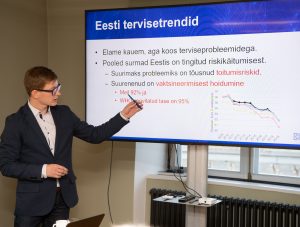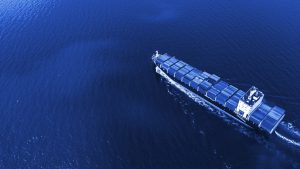The corona pandemic sets in motion the shortening of supply chains in the electronics industry, which leads to some of the manufacturing activities returning to Europe from Asia, showed the Foresight Centre report “The Impact of the Virus Crisis on the Estonian Economy. Scenarios up to 2030”, soon to be published. Estonia can benefit from investments only by offering a stable economic environment for investors.
News
According to the report “The Future of Health Care in Estonia. Scenarios up to 2035” published by the Foresight Centre and presented today, Estonia has the largest unmet demand for medical care in Europe, and if the current health insurance system continues, the availability of health care services will decrease.
The Corona pandemic may increase hidden protectionism in the export markets of the Estonian food industries, the Foresight Centre report “The Impact of the Virus Crisis on the Estonian Economy. Scenarios up to 2030” shows. During the first wave of the virus, the monthly turnover in the manufacture of beverages dropped by 20.6%; the greatest decline in the manufacture of food products, 6.9%, took place in April.
Hospitality, catering and travel services were hit the hardest by the first wave of the coronavirus, shows the Foresight Centre report “The Impact of the Virus Crisis on the Estonian Economy. Scenarios up to 2030”, soon to be published. The monthly turnover of the whole sector dropped by 76.2% compared to earlier, while travel companies saw their turnover drop by 98.3%.
The Estonian wood and paper industry resisted the economic impacts of the first wave of the coronavirus better than the average, the Foresight Centre report “The Impact of Virus Crisis on the Estonian Economy” shows. The turnovers of the industry started to recover already in June.
In Estonia, the information technology and communications sector was the least hit by the first wave of the coronavirus in spring, while accommodation providers, caterers and travel agents found themselves in the most difficult situation, the Foresight Centre report “The Impact of Virus Crisis on the Estonian Economy” shows.
The funding crisis in Estonian health care will arrive already in the next five years, the report “Estonian Healthcare in the Future – Key Trends and Exemplary Countries” published by the Foresight Centre today shows. The increase in costs could be slowed down by the improvement of the health behaviour of the people of Estonia and making financing of health care more performance-based.
The Foresight Centre and the Riigikogu organised a hydrogen conference “Is Estonia About to Miss the Hydrogen Train?” in Tallinn Creative Hub to look into options for replacing fossil fuels with hydrogen-based solutions in Estonia.
One new ship under the Estonian flag could generate EUR 45,000–240,000 in tax revenue for the state budget, says the Foresight Centre report “The Future of Estonia as a Flag State. Development Scenarios up to 2040“. One proposed path for Estonia’s development is putting the emphasis on environmental sustainability and becoming a “flag state for green ships”.
The Foresight Centre conference “A Different Kind of Future”, which was held on 30 September, focused on changes in global power relations and Estonia’s position in the post-corona world.

 An independent think tank at the Riigikogu
An independent think tank at the Riigikogu  Uku Varblane
Head of Research at Foresight Centre
Uku Varblane
Head of Research at Foresight Centre 



